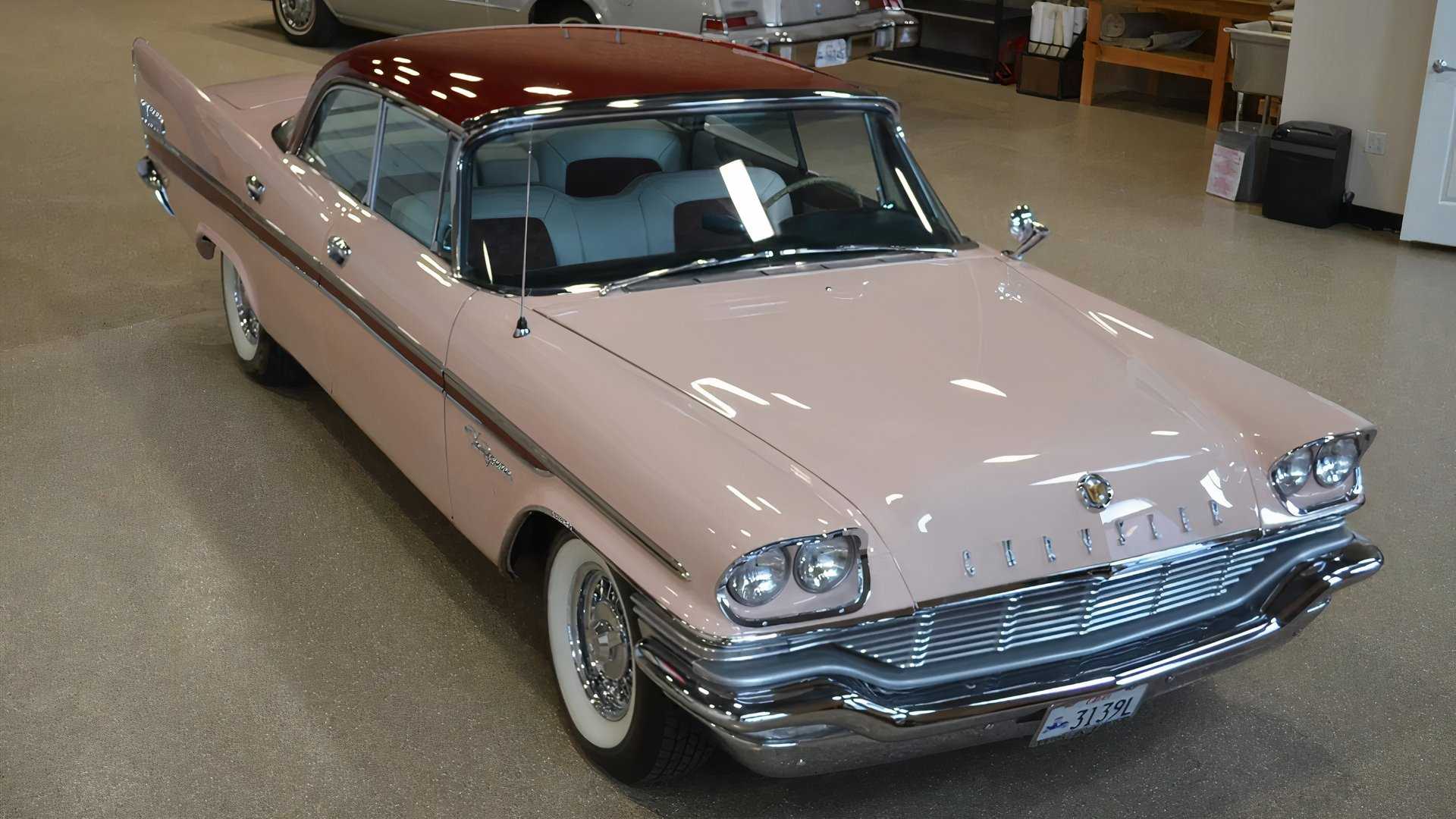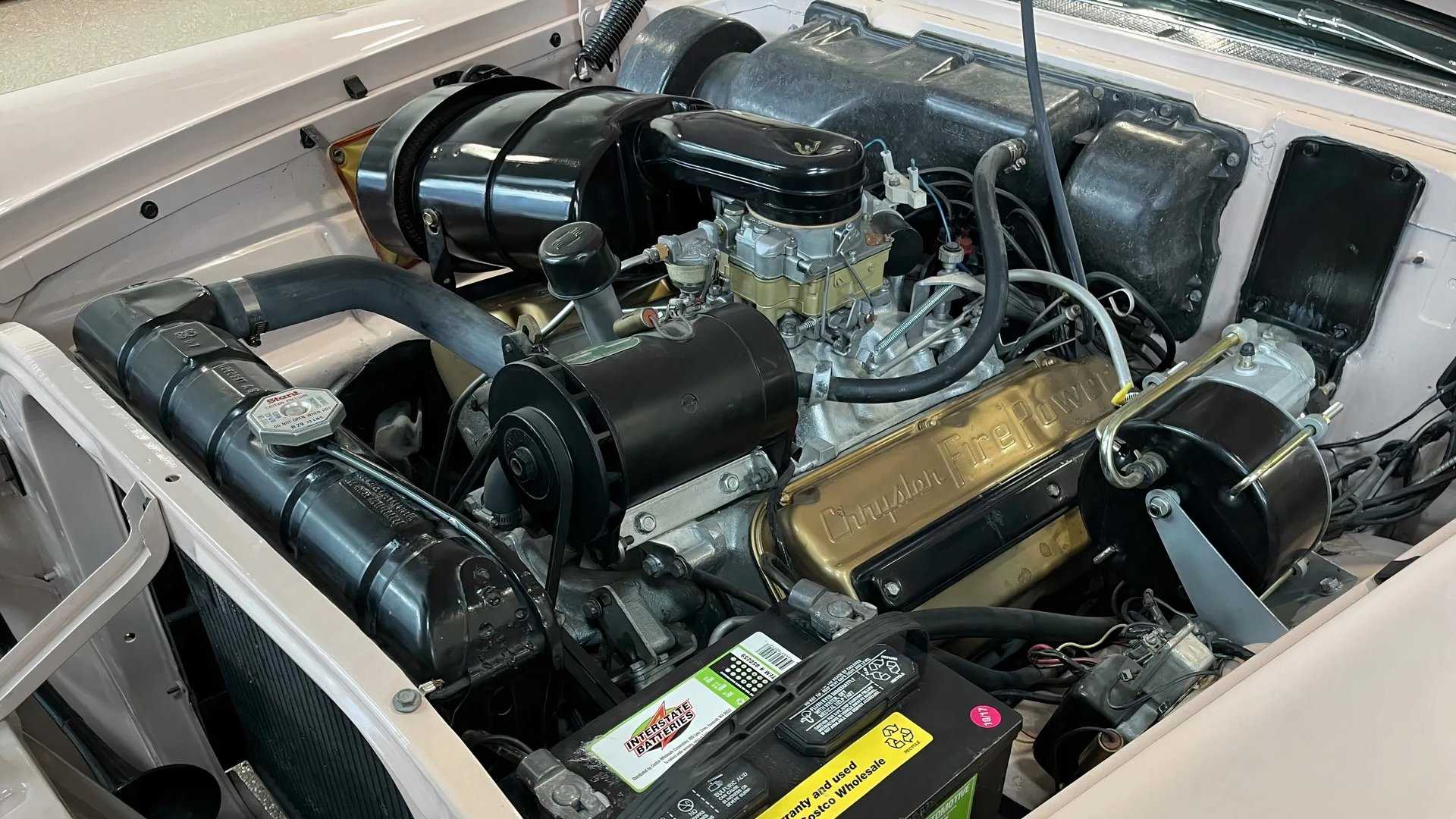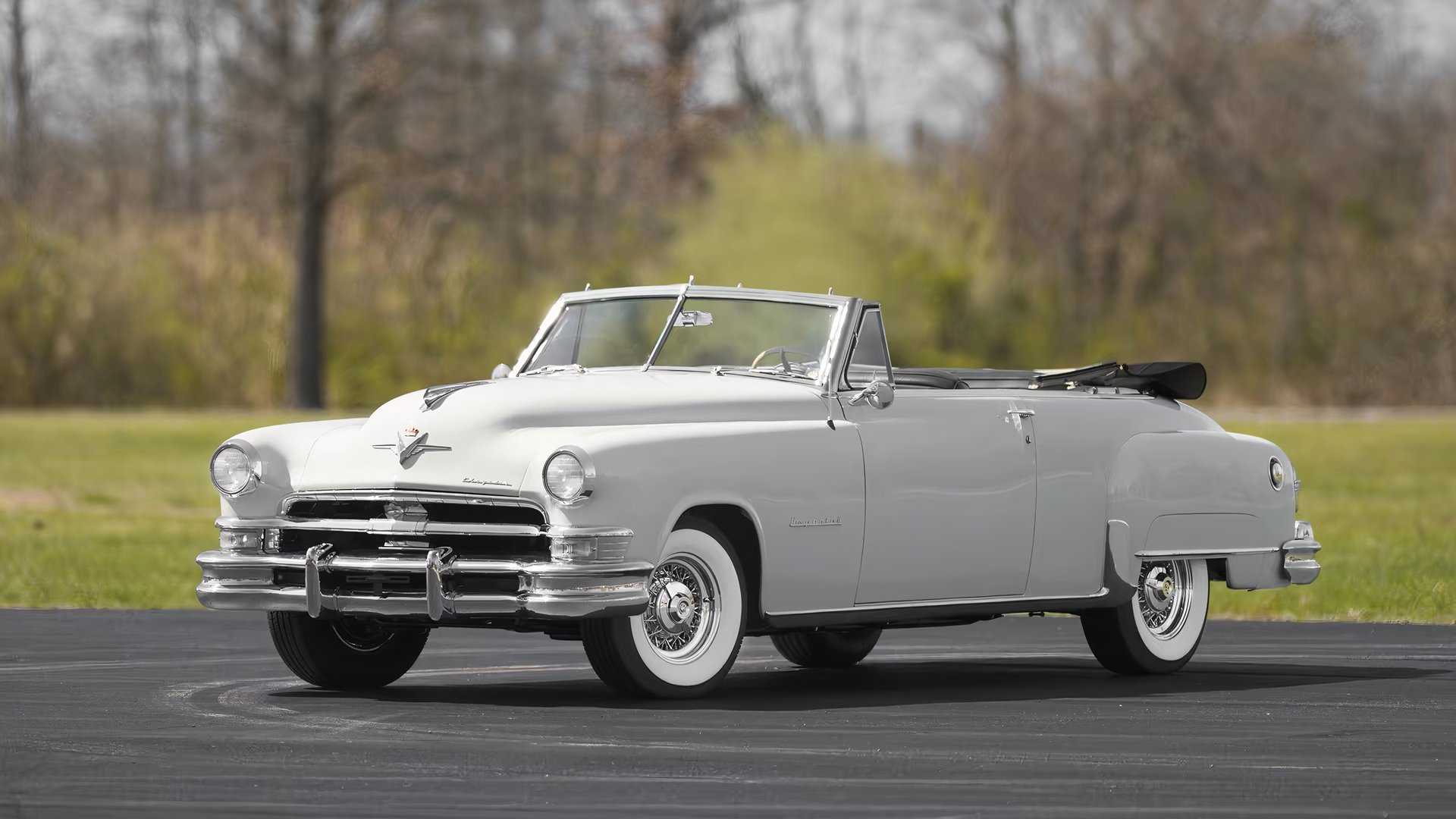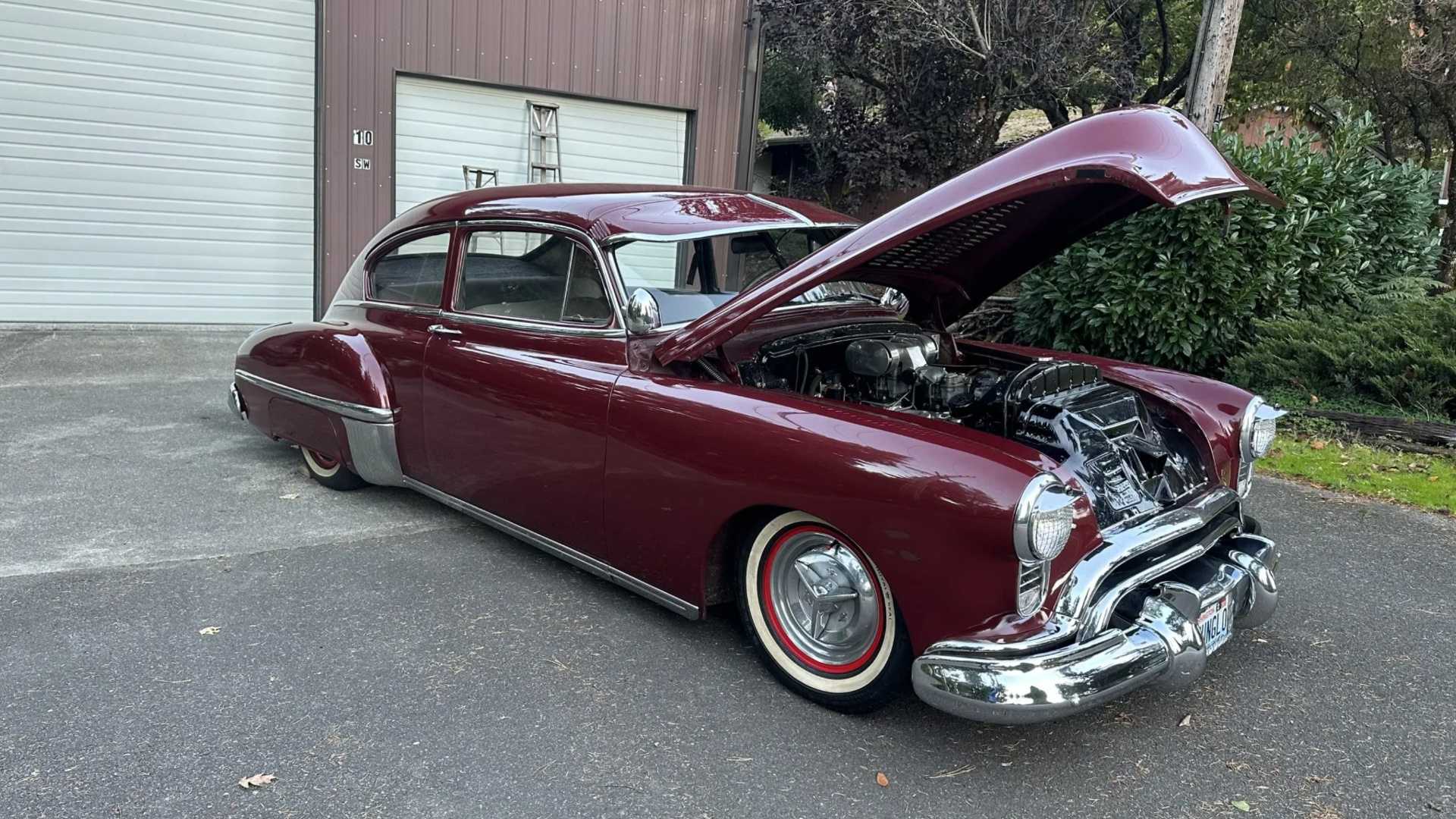The decade of the 1950s represented a significant period of transformation in American history. automotive history This decade witnessed the emergence of influential power. V8 engines This phrase came to represent both speed and luxury. During the era when automakers were competing fiercely, each began equipping their cars with progressively bigger engines to attract gearheads and showcase their technical skills. In this competitive landscape, a single automobile distinguished itself by featuring the biggest-displacement V8 engine throughout the 1950s.
Big engines At that point, these machines represented more than just velocity—they were a declaration. They embodied strength, assurance, and the limitless aspirations of postwar America. Although numerous producers crafted remarkable engines, only one excelled when it came to sheer displacement.
The 1958 Chrysler New Yorker featured the largest displacement V8 engine during the 1950s.

In 1958, Chrysler launched the New Yorker fitted with the powerful 392 cubic inch (6.4-liter) FirePower engine V8 engine This engine was part of Chrysler’s initial lineup of Hemi engines, which were famous for their hemispherical combustion chambers that improved both efficiency and power delivery.
The 392 Hemi It had a raised deck engine with a bore and stroke measuring 4.00 inches by 3.90 inches, respectively, which gave it a total displacement of 392.67 cubic inches. The engine boasted a deck height of 10.87 inches—higher compared to earlier models—and could generate as much as 375 horsepower depending on the setup. As such, the 1958 Chrysler New Yorker stood out as one of the top performers and status symbols among cars from that era.
The New Yorker wasn't merely a leading publication – it was Chrysler Positioned higher than both the Windsor and Saratoga models, this vehicle exuded sophistication paired with substantial power beneath its hood. Aimed at discerning customers seeking more than mere opulent interiors, the New Yorker offered an unmatched blend of luxurious comfort and impressive performance capabilities that stood toe-to-toe with numerous sportier vehicles of its era. Underneath its sleek exterior lay the potent 392 Hemi engine, transforming what might have been considered merely a top-tier touring car into a formidable ride capable of commanding attention as soon as you pressed down on the accelerator.
The 392 Hemi V8 engine is designed for performance.

The 392 Hemi V8 was an engineering masterpiece, featuring numerous advanced attributes for its era:
- The engine featured a displacement volume of 392.67 cubic inches (6.4 liters), characterized by a bore size of 4.00 inches and a stroke length of 3.90 inches. This setup was part of a naturally aspirated design with an angle of 90 degrees within a V8 layout. To enhance performance, particularly during higher revolutions per minute, Chrysler constructed this engine with a raised deck which facilitated extended stroke lengths and improved airflow efficiency.
- The valvetrain utilized an overhead valve (OHV) configuration featuring two valves for each cylinder, which enhanced its overall strength and efficiency. The precise valve timing along with powerful valve springs enabled the engine to operate at higher revolutions effortlessly and provided consistent torque throughout the speed spectrum.
- The hemispherical combustion chamber design facilitated superior airflow and combustion, boosting both power delivery and efficiency. By minimizing heat loss and optimizing the utilization of the air-fuel mixture, this configuration ensured that the Hemi designation remained relevant for many years.
Chrysler 392 Hemi Major Features
Source: Chrysler
- The vehicle's fuel system included a singular four-barrel carburetor standard, while certain high-performance variants came with two of these carburetors for enhanced fuel flow and increased horsepower. Depending on consumer preferences ranging from luxurious comfort to performance tuning, Chrysler provided various intake setups.
- The compression ratio varied based on the setup, falling anywhere between 9.25:1 and 10:1, striking an optimal balance between performance and fuel economy. When paired with high-grade gasoline, this resulted in a potent and responsive engine.
- The standard models generated between 325 to 345 horsepower. However, high-performance editions like those found in the Chrysler 300C and 300D could crank out up to 375 horsepower. These vehicles also boasted remarkable torque levels, ensuring robust acceleration despite their substantial body structure.
Other Chrysler Models with V8 Engines From The 1950s

In the 1950s, Chrysler provided an array of vehicles equipped with robust V8 engines. Their selection from that era was meticulously organized into different tiers, offering consumers various choices based on their financial constraints and desired levels of performance. Whether aiming for cost-effective power or high-end luxury, Chrysler established itself as a key player in top-tier American V8 technology.
Chrysler 300 Series
Introduced in 1955, the Chrysler 300 The series gained recognition for its outstanding performance and opulence. In 1955, the Chrysler C-300 came fitted with a 331-cubic-inch (5.4-liter) Hemi V8 engine delivering 300 horsepower, positioning it among the top performers of its era. When the 300C made its debut in 1957 featuring the potent 392 Hemi engine, Chrysler had firmly established itself as the creator of America’s “gentleman's high-performance car.”
Chrysler Imperial
Next, serving as Chrysler’s top-of-the-line luxury vehicle, it gained an advantage with the inclusion of Hemi V8 engines. Models produced between 1951 and 1955 came equipped with the 331 cubic-inch motor, whereas subsequent versions utilized more powerful iterations like the 354 and 392 cubic-inch configurations, offering both speed and elegance. They stood out as some of the finest American automobiles during that era.
Chrysler Windsor and Saratoga
These models provided greater accessibility to both luxury and high performance, featuring V8 engine choices such as the 331 and 354 cubic-inch Hemi engines, thus appealing to a wider audience. Although slightly less potent than the New Yorker or 300C, these vehicles still delivered substantial power relative to their cost.
Other Big-Block V8 Engines From The '50s

The 1950s marked a pivotal era for American car performance, as companies strived to expand the limits of engine size and horsepower. Multiple vehicle makers rolled out substantial V8 engines throughout that time period.
Cadillac 365 V8
In 1956, Cadillac unveiled the 365 cubic-inch (6.0-liter) V8 engine capable of generating up to 305 horsepower. Eldorado This particular engine was renowned for its smooth operation and became a cornerstone of Cadillac's luxurious vehicles. While Cadillac prioritized comfort and sophistication, the engine also delivered substantial power.
Lincoln 368 V8
The 368-cubic-inch (6.0-liter) V8 engine from Lincoln, launched in 1956, generated 285 horsepower and powered vehicles such as the Lincoln Premiere and Capri models. Known for their refinement and smooth operation, these engines offered ample torque capable of smoothly propelling substantial luxury car frames. Although designed primarily for comfort rather than speed, they ensured a stable and controlled ride quality.
Cadillac Eldorado compared with Lincoln Premiere versus Oldsmobile J-2 along with Chevrolet Impala 348
Oldsmobile Rocket 371 V8
In 1957, Oldsmobile increased the displacement of their Rocket V8 engine to 371 cubic inches (6.1 liters), capable of generating as much as 312 horsepower when equipped with three carburetors in what they called the J-2 setup. This marked one of the first instances where a high-performance powerplant became widely available to consumers, which played a key role in cementing the "Rocket" moniker associated with Oldsmobile over many years.
Chevrolet 348 V8
Launched in 1958, Chevrolet’s 348 cubic-inch (5.7-liter) V8 engine, which belonged to the "W-series," delivered up to 315 horsepower. This engine paved the way for the iconic 409 V8 from the following decade. Although it wasn’t the largest engine of its era, its influence was significant, setting the stage for Chevrolet’s dominance in the muscle car market.
Source: Chrysler .
